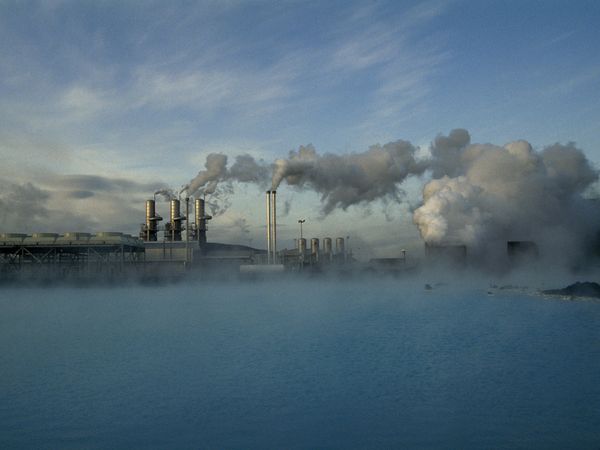Blog about Iceland’s use of geothermal energy for generating heat and electricity.
Iceland is largely made of porous basalt at the crack in Earth’s crust where the North American and Eurasian plates are pulling apart. There are enormous underground reservoirs of water that are continually renewed by levels of annual precipitation that range as high as 177 inches over Iceland’s glaciers, and shallow patches of magma that heat the deepest reaches of these reservoirs to temperatures in excess of 750 degrees Fahrenheit. The image below details Iceland’s use of their geothermal energy resources. The largest portion goes to space heating and the second largest percentage goes to electricity generation.
Generating Heat: There is no national grid in Iceland – harnessing the energy comes via the remarkably simple method of sticking a drill in the ground near one of the country’s 600 hot spring areas, and using the steam that is released to turn the turbines and pump up water that is then piped to nearby settlements. Geothermal water is used to heat around 90% of Iceland’s homes, and keeps pavements and car parks snow-free in the winter. Hot water from the springs is cooled and pumped from boreholes that vary between 200 and 2,000m straight into the taps of nearby homes, negating the need for hot water heating. It’s also purified and cooled to provide cold drinking water.
Geothermal Electricity: Geothermal power facilities currently generate 25% of the country’s total electricity production. There are three basic designs for geothermal power plants, all of which pull hot water and steam from the ground, use it, and then return it as warm water to prolong the life of the heat source. In the simplest design, known as dry steam, the steam goes directly through the turbine, then into a condenser where the steam is condensed into water. In a second approach, very hot water is depressurized or “flashed” into steam which can then be used to drive the turbine. In the third approach, called a binary cycle system, the hot water is passed through a heat exchanger, where it heats a second liquid—such as isobutane—in a closed loop. Isobutane boils at a lower temperature than water, so it is more easily converted into steam to run the turbine. These three systems are shown in the diagrams below.
Resources:
1. Orkustofnun
http://www.nea.is/geothermal/direct-utilization/nr/91
2. Scientific American
http://www.scientificamerican.com/article/iceland-geothermal-power/
3. The Guardian
http://www.theguardian.com/environment/2008/apr/22/renewableenergy.alternativeenergy


